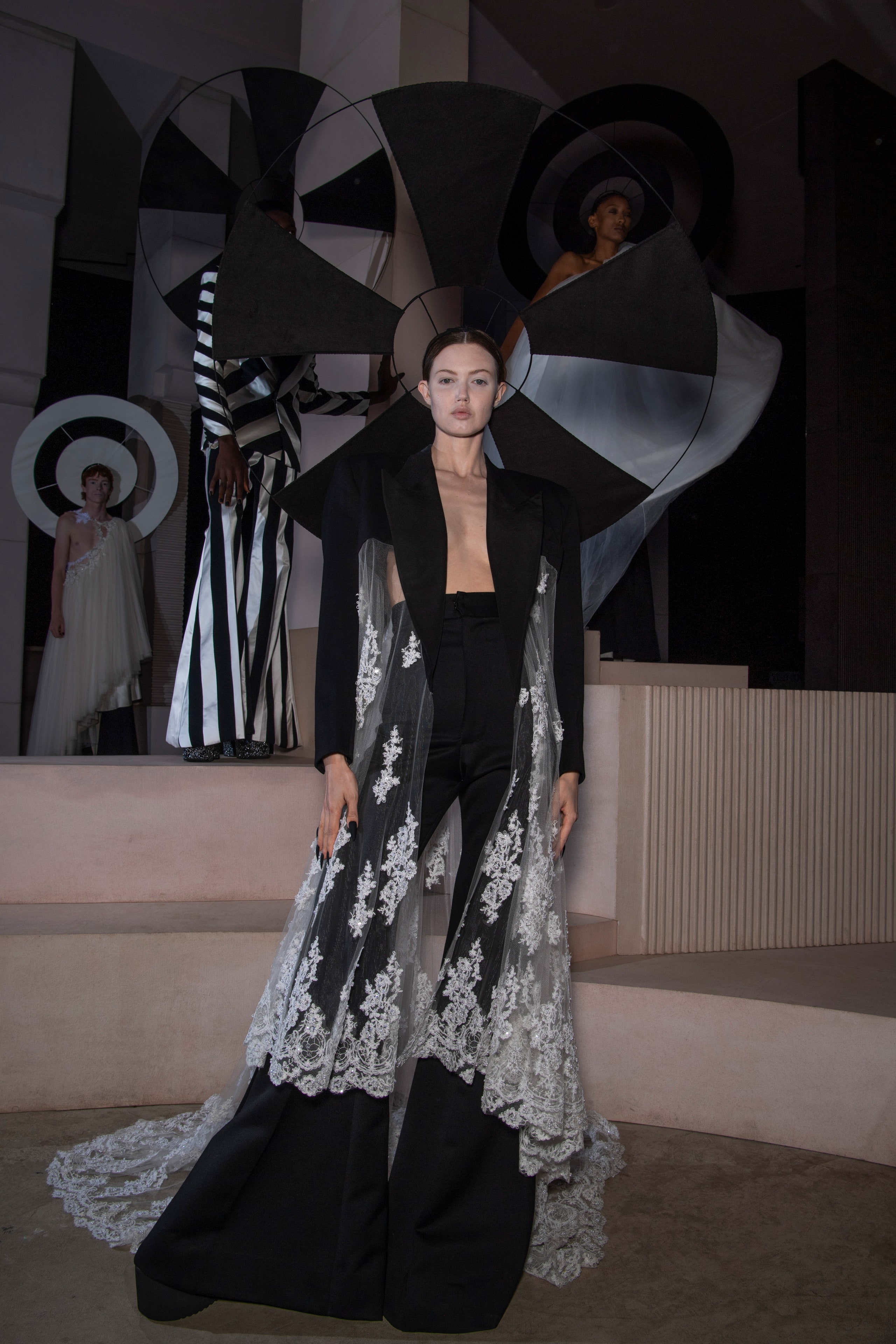On the morning of his first-ever runway show, Harris Reed woke up to a 5,000-word profile on himself in The New Yorker. “I knew someday I would have a profile in The New Yorker, but I didn’t think I would have it at 25,” he admitted, during a preview in his studio suite at London’s Standard Hotel where he has landed a “designer-in-residence” deal, free of charge. His debut show took place in the Serpentine Pavilion with a performance by the artist Kelsey Lu, and was followed by cocktails and canapés hosted by the gallery’s CEO. As you may have gathered, Reed isn’t your average emerging designer.
So, how exactly does a 25 year old, who only graduated from Central Saint Martins last year, get into The New Yorker? “I think it comes from putting all my work on Instagram through the pandemic,” he said, citing an effect of the lockdowns similarly highlighted by his friend Chet Lo at yesterday’s Fashion East show: digital exposure during a time of collective boredom. “And,” of course, “having high profile clients,” Reed added. He is to fashion what Lil Nas X is to music and After is to cinema: a product of a social media fan culture, where new stars are created by association with existing stars.
While he was still studying, a chance meeting with the celebrity stylist Harry Lambert earned him a commission for Harry Styles, whose image was made for the fluid romanticism in which Reed deals. The pop star’s 39 million followers kicked in, and just like that, a star was born. As his debut show demonstrated, Reed—who is the son of the Oscar-winning movie producer Nick Reed—thrives in the costume territory. He repurposed bridal and groom’s wear sourced from the British charity chain Oxfam into majestic hybrids of gowns and tuxedos, topping them off with enormous spherical headpieces that have become his trademark.
The way he cut his dresses was imaginative and resourceful to say the least. Most successful were the ones that showed more silhouette, like a tuxedo jacket chopped into a bolero and elongated with a veil that cascaded like a waterfall, turning it into a dress. The hats made for the most DIY-looking element of the show and could perhaps have done with some less obviously recycled fabrication. But that wasn’t the point. “Everything is about being huge and being seen,” Reed said. It was true for the outfit he created for Iman at last week’s Met Gala, made with the support of Dolce & Gabbana’s Alta Moda ateliers.
He spent the fittings talking to the supermodel about her late husband David Bowie, who featured heavily on his collection mood boards, and to whom he paid tribute in a striped glam rock suit made out of strips cut from said second-hand finds. Reed shares his Bowie mania with Alessandro Michele, with whom he interned at Gucci for nine months after being invited to be a part of the brand’s roster of cutting-edge cool kids, who get ferried around the world for events. Reed—who looks like a young Elizabeth I—even walked Michele’s cemetery show in Arles.
You’d be forgiven for looking at Reed’s one-off creations—which he called “demi-couture”—and thinking, “What’s it all for?” Like Michele, he wants to fly the flag for gender fluidity and nonconformity. Unlike Michele, he doesn’t produce ready-to-wear and barely offers any other accessible merchandise. Rather, Reed is a brand without a brand: something as post-post-modern as a personified idea that other people and their brands want to buy into. He’s an internet sensation and celebrity favorite, which—in this day and age—is arguably a talent in its own right. And he’s only just begun.









